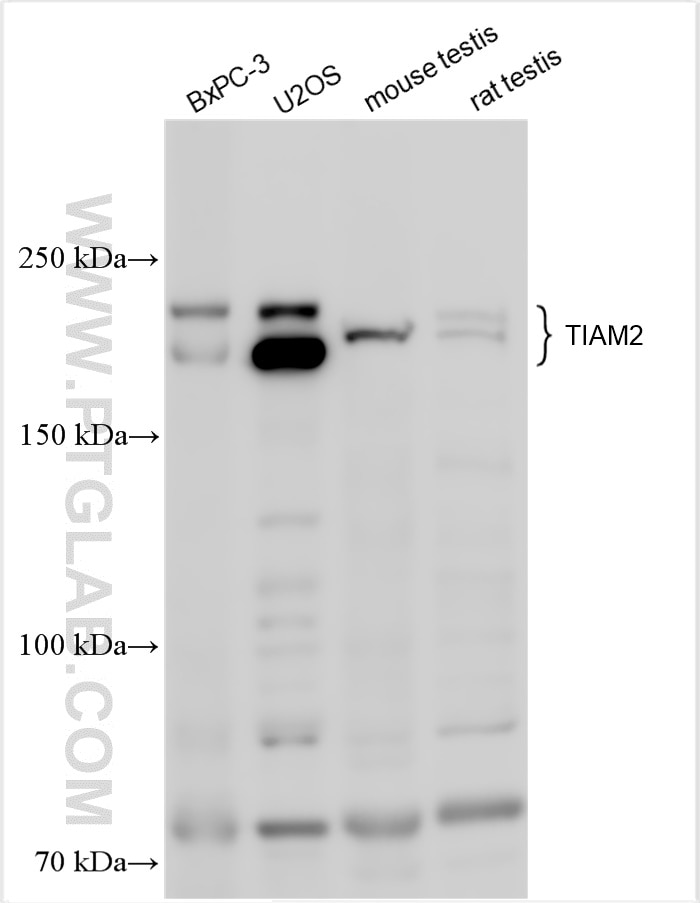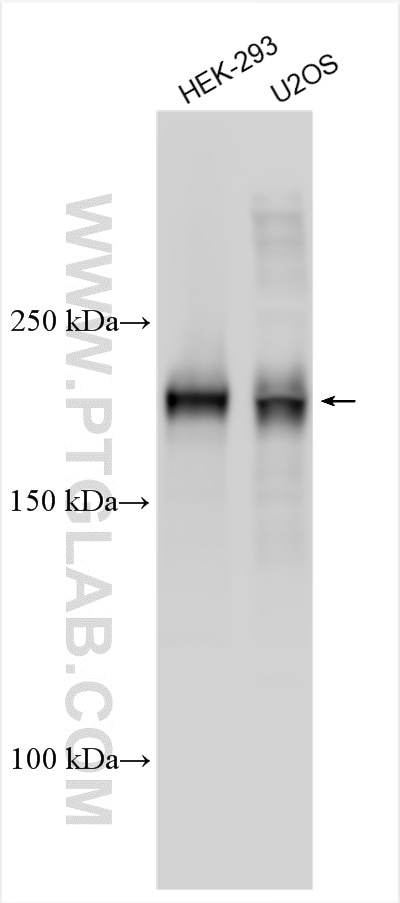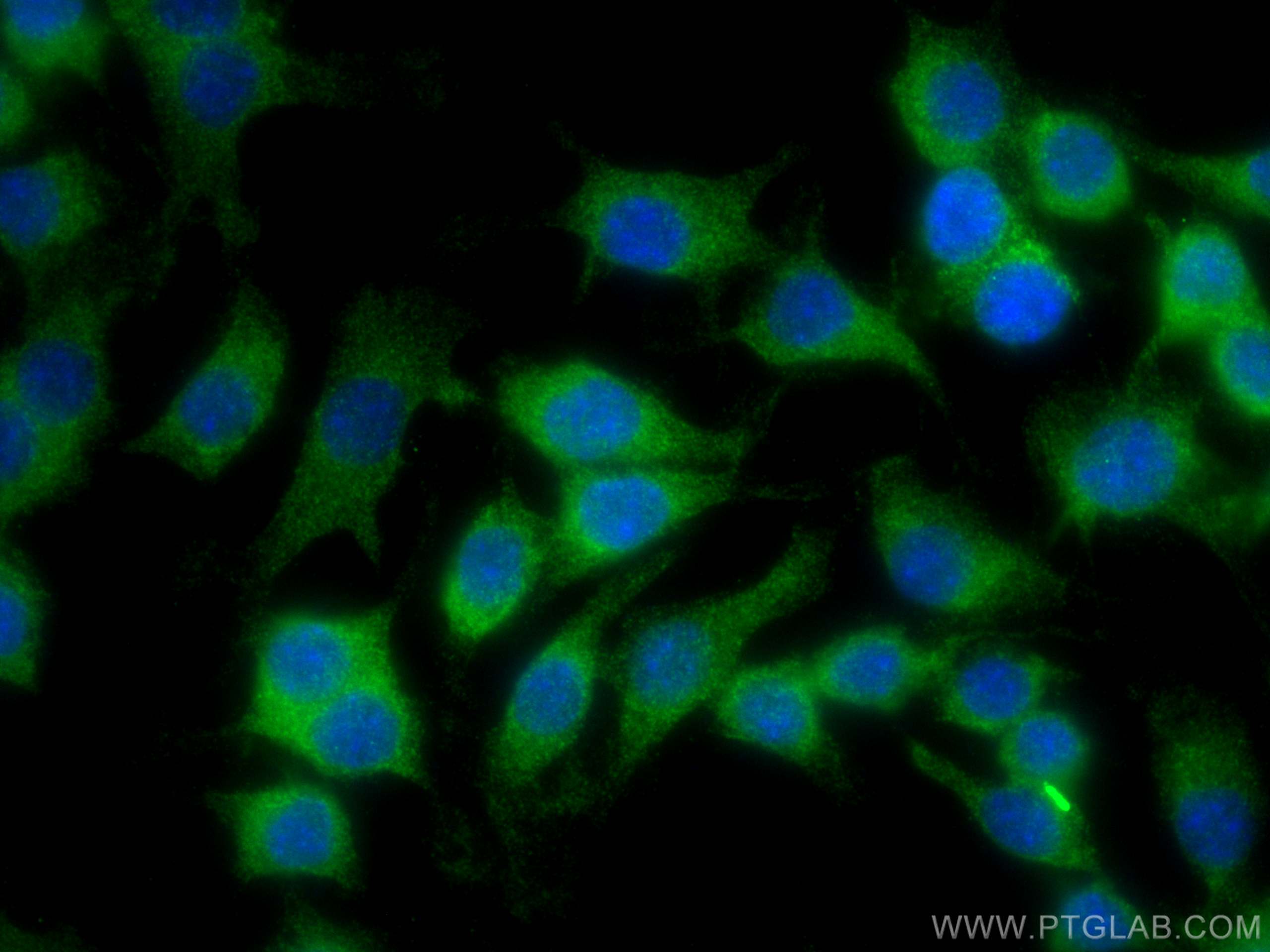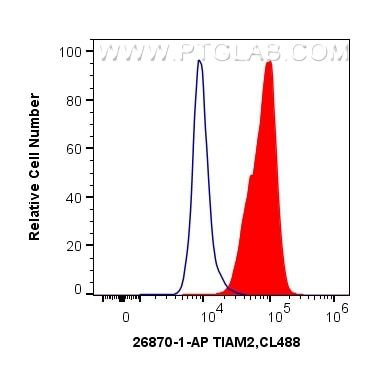TIAM2 Polyklonaler Antikörper
TIAM2 Polyklonal Antikörper für WB, IF/ICC, FC (Intra), ELISA
Wirt / Isotyp
Kaninchen / IgG
Getestete Reaktivität
human, Maus, Ratte
Anwendung
WB, IF/ICC, FC (Intra), ELISA
Konjugation
Unkonjugiert
Kat-Nr. : 26870-1-AP
Synonyme
Geprüfte Anwendungen
| Erfolgreiche Detektion in WB | BxPC-3-Zellen, HEK-293-Zellen, Maushodengewebe, Rattenhodengewebe, U2OS-Zellen |
| Erfolgreiche Detektion in IF/ICC | RAW 264.7-Zellen |
| Erfolgreiche Detektion in FC (Intra) | K-562-Zellen |
Empfohlene Verdünnung
| Anwendung | Verdünnung |
|---|---|
| Western Blot (WB) | WB : 1:500-1:2000 |
| Immunfluoreszenz (IF)/ICC | IF/ICC : 1:50-1:500 |
| Durchflusszytometrie (FC) (INTRA) | FC (INTRA) : 0.40 ug per 10^6 cells in a 100 µl suspension |
| It is recommended that this reagent should be titrated in each testing system to obtain optimal results. | |
| Sample-dependent, check data in validation data gallery | |
Produktinformation
26870-1-AP bindet in WB, IF/ICC, FC (Intra), ELISA TIAM2 und zeigt Reaktivität mit human, Maus, Ratten
| Getestete Reaktivität | human, Maus, Ratte |
| Wirt / Isotyp | Kaninchen / IgG |
| Klonalität | Polyklonal |
| Typ | Antikörper |
| Immunogen | TIAM2 fusion protein Ag25469 |
| Vollständiger Name | T-cell lymphoma invasion and metastasis 2 |
| Beobachtetes Molekulargewicht | 190-200 kDa |
| GenBank-Zugangsnummer | BC137275 |
| Gene symbol | TIAM2 |
| Gene ID (NCBI) | 26230 |
| Konjugation | Unkonjugiert |
| Form | Liquid |
| Reinigungsmethode | Antigen-Affinitätsreinigung |
| Lagerungspuffer | PBS with 0.02% sodium azide and 50% glycerol |
| Lagerungsbedingungen | Bei -20°C lagern. Nach dem Versand ein Jahr lang stabil Aliquotieren ist bei -20oC Lagerung nicht notwendig. 20ul Größen enthalten 0,1% BSA. |
Hintergrundinformationen
TIAM2 is a Rac1-specific GEF, which was identified originally as a homologue of TIAM1. TIAM2 plays a critical role in the malignancy development of many human cancers. TIAM2 expression upregulates N-cadherin and vimentin, thus enhancing epithelial-to-mesenchymal transition (EMT) and leading to the enhancement of proliferation and invasion in hepatoma cells.
Protokolle
| PRODUKTSPEZIFISCHE PROTOKOLLE | |
|---|---|
| WB protocol for TIAM2 antibody 26870-1-AP | Protokoll herunterladen |
| IF protocol for TIAM2 antibody 26870-1-AP | Protokoll herunterladen |
| STANDARD-PROTOKOLLE | |
|---|---|
| Klicken Sie hier, um unsere Standardprotokolle anzuzeigen |





